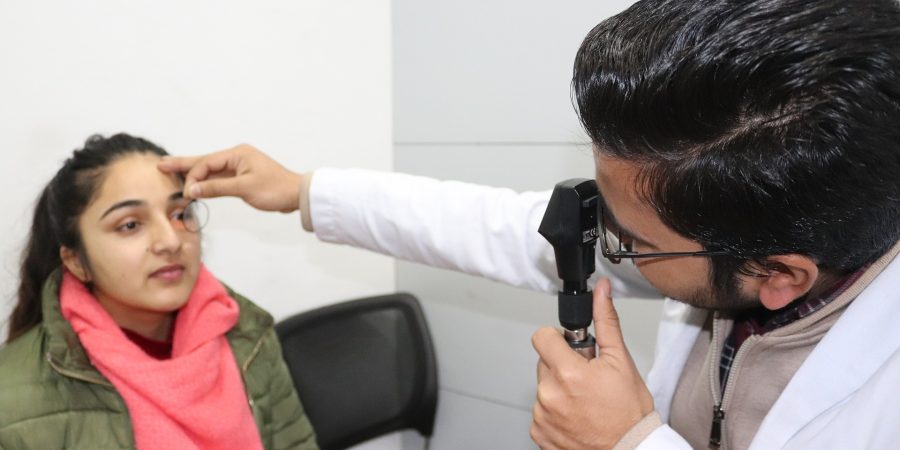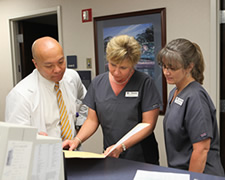Treatments

Comprehensive Eye Exams
From back to school eye examinations to obtaining a new prescription for contacts or eyeglasses, you can feel confident that you will receive skilled care in a professional environment. Our doctors and technicians offer a team approach for completing necessary testing, performing a thorough examination of your eyes, and providing you with the best treatments and/or optical prescriptions necessary to meet your individual needs.
Moultrie Eye Center and Valdosta Eye Center also have a full-service optical department with certified opticians who provide one on one customer service, and a tremendous selection of name brand and specialty eyeglass frames. We offer high quality optical products that can fit any budget, and our optical specialists will be more than happy to meet your needs in every way.
Low Vision
Our Eye Centers offer complete low vision care. Anyone who suffers from decreased vision due to eye disease, trauma, or neurological impairment that cannot be treated with medication, surgery, or optical correction is considered “Low Vision.” If you or someone you know suffers from low vision, call our office to schedule a Low Vision Examination with us.
Treatment of Eye Diseases
Diabetes, macular degeneration, and glaucoma can all lead to vision impairment if left untreated. Our team of board-certified doctors provide the latest treatments and procedures to monitor and treat these eye diseases. If you or someone you know suffers from an eye disease, do not wait, call and schedule an appointment to find out what intervention may be necessary to save your sight or the sight of someone you love!
- Nsectetur cing elit.
- Suspe ndisse suscipit sagittis leo.
- Entum estibulum dignissim posuere.
- If you are going to use a passage.
Surgery Procedure
You will be asked to arrive 30 minutes to one hour prior to surgery. You will be checked in and given a sedative to relax you. You will then be prepared for surgery.
Once the eye is numb a sterile drape will be placed, and an eyelid holder (speculum) will be placed to hold the eye open for the doctor during surgery. A small incision will be made so the surgeon can strip away the diseased Descemet’s membrane and endothelial cells.
Next, the bottom 10 – 20% of a donor cornea with healthy Descemet’s membrane and endothelial cells will be inserted through the incision. After the donor graft is placed an air bubble will be used to hold the new portion of cornea in place.
Immediately following the surgery you will be taken to the recovery area where you will remain flat for about an hour to allow the air bubble to continue to press the tissue into place.
Before you leave a patch will be placed over the eye. Antibiotic eye drops will be used for a week or so to help prevent infection. A mild steroid eye drop will be used for at least a year to help prevent rejection.
The day after surgery you should be able to resume your normal activities. DSAEK allows your vision to improve within a few weeks compared to a full thickness transplant which could take months or years. This allows the doctor to do DSAEK on the other eye within months instead of a year or more.
The goal of any vision restoration procedure is to improve your vision. Usually most patients will begin seeing better within 6-8 weeks. However, we cannot guarantee that you will have the results you desire. As with any transplant there is a risk of rejection of the donor tissue. If rejection does occur it is possible to have the procedure repeated.


